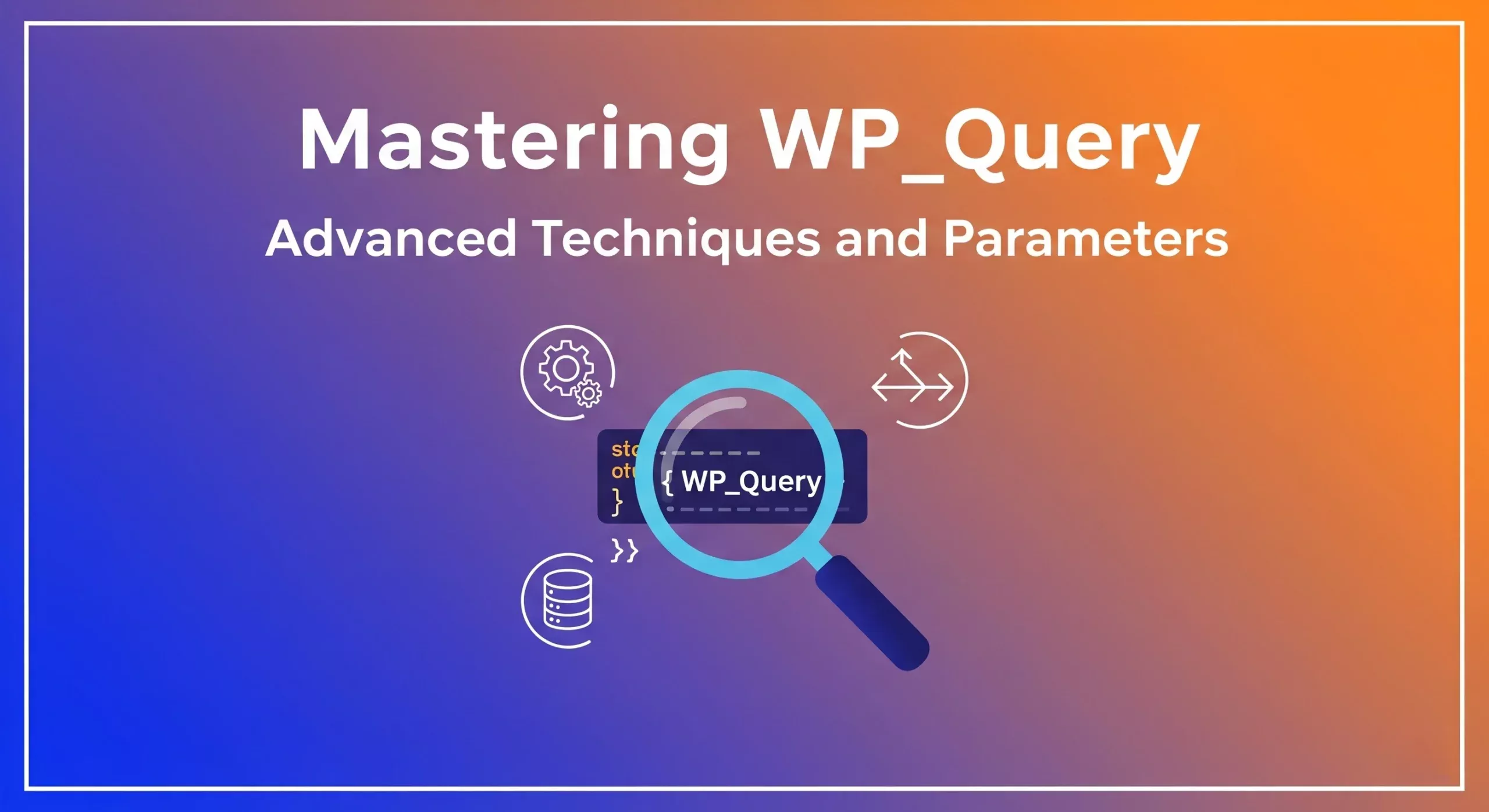If you’ve ever built a custom WordPress theme or plugin, you’ve likely used WP_Query. It’s the engine that powers the WordPress loop, allowing you to fetch nearly any content from your database. While basic queries are straightforward, the real power of WP_Query lies in its advanced parameters.
This guide will dive deeper into three of the most powerful types of queries: meta queries, taxonomy queries, and date queries. Mastering these will allow you to build highly specific and complex content displays with precision.
## Querying by Custom Fields (meta_query) M
A meta_query lets you retrieve posts based on the values of their custom fields. This is incredibly useful for filtering content like products by price, events by location, or any other custom data you’ve stored.
The meta_query parameter is an array of arrays. Each inner array defines a rule for a specific custom field. You can even define a relation between rules (AND or OR).
Example: Finding “Featured” Posts in a Specific Price Range
Imagine you have a “product” custom post type with custom fields for price (a number) and is_featured (true/false). Let’s find all products that are featured AND cost between $100 and $500.
PHP
$args = array(
'post_type' => 'product',
'meta_query' => array(
'relation' => 'AND', // Both conditions must be true
array(
'key' => 'is_featured',
'value' => 'true',
'compare' => '=',
),
array(
'key' => 'price',
'value' => array( 100, 500 ),
'type' => 'NUMERIC',
'compare' => 'BETWEEN',
),
),
);
$product_query = new WP_Query( $args );
// The Loop
if ( $product_query->have_posts() ) {
while ( $product_query->have_posts() ) {
$product_query->the_post();
// Display product content...
}
wp_reset_postdata();
}
## Querying by Taxonomy (tax_query)
A tax_query is used to fetch posts associated with specific categories, tags, or even custom taxonomies. Similar to meta_query, it’s an array of rule arrays, complete with a relation parameter to handle complex logic.
Example: Finding Posts in a Category but Excluding a Tag
Let’s find all posts that are in the “WordPress” category BUT NOT in the “Beginner” tag. This is useful for creating feeds of advanced-only content.
PHP
$args = array(
'post_type' => 'post',
'tax_query' => array(
'relation' => 'AND',
array(
'taxonomy' => 'category',
'field' => 'slug',
'terms' => 'wordpress',
),
array(
'taxonomy' => 'post_tag',
'field' => 'slug',
'terms' => 'beginner',
'operator' => 'NOT IN',
),
),
);
$post_query = new WP_Query( $args );
// The Loop
if ( $post_query->have_posts() ) {
while ( $post_query->have_posts() ) {
$post_query->the_post();
// Display post content...
}
wp_reset_postdata();
}
## Querying by Date (date_query)
A date_query allows you to retrieve posts published within a specific timeframe. You can query by year, month, day, or even a relative time period.
Example: Fetching Posts Published This Month
This is a classic use case for a “What’s New” or “Recent Posts” section on a site.
PHP
$args = array(
'post_type' => 'post',
'date_query' => array(
array(
'year' => date( 'Y' ),
'month' => date( 'm' ),
),
),
);
$recent_posts_query = new WP_Query( $args );
// The Loop
if ( $recent_posts_query->have_posts() ) {
while ( $recent_posts_query->have_posts() ) {
$recent_posts_query->the_post();
// Display post content...
}
wp_reset_postdata();
}
## Performance Considerations
Complex queries can be slow if not handled carefully. Here are a few tips to keep your queries fast:
- Cache Results: For queries that don’t change often, use the Transients API to cache the results and reduce database load.
- Fetch Only What You Need: If you only need post IDs, use
'fields' => 'ids'. This is much faster as WordPress doesn’t have to fetch all post data. - Avoid Ordering by Meta Value: Queries that use
'orderby' => 'meta_value'or'meta_value_num'can be very slow on sites with many posts. If possible, avoid them on high-traffic pages.
By mastering these advanced WP_Query parameters, you can move beyond simple blog feeds and build truly dynamic, customized, and efficient WordPress sites.




